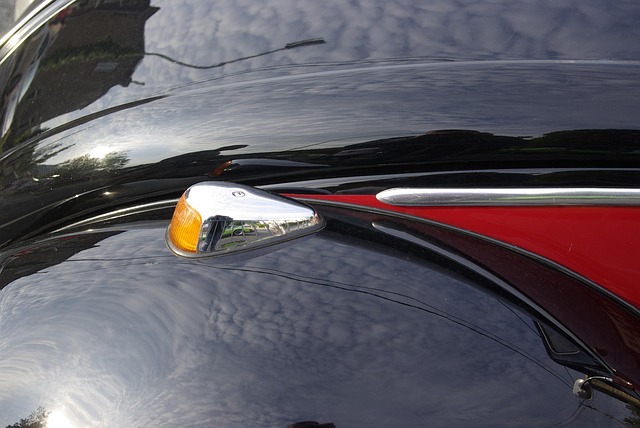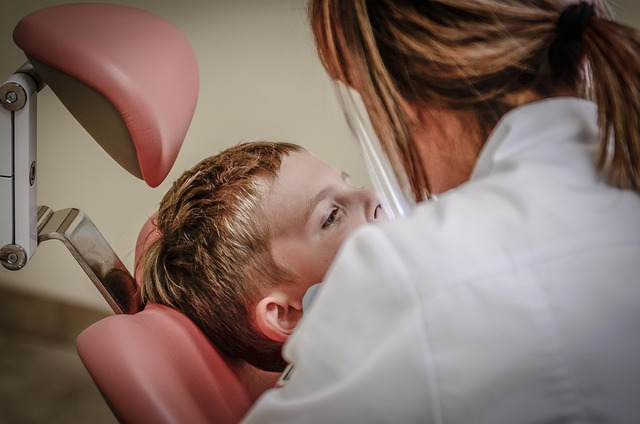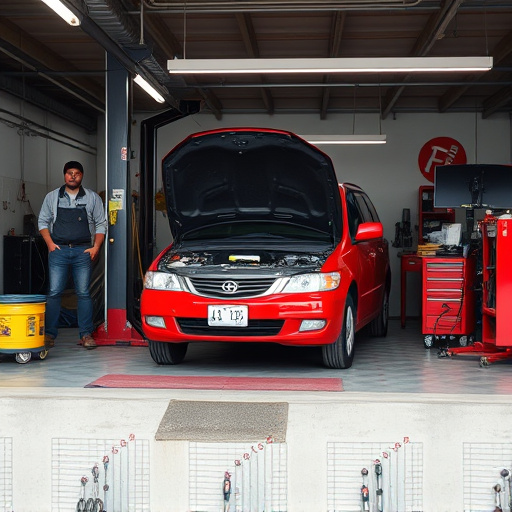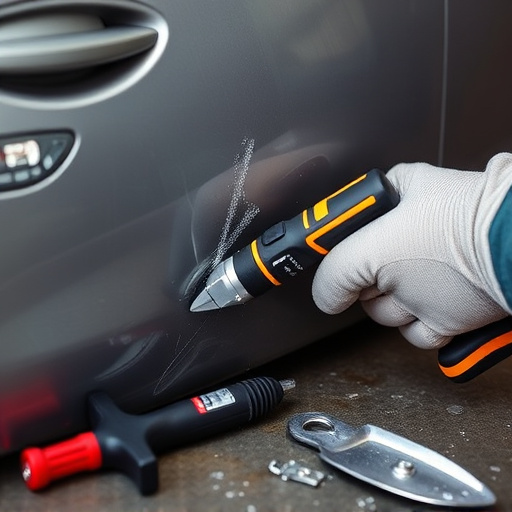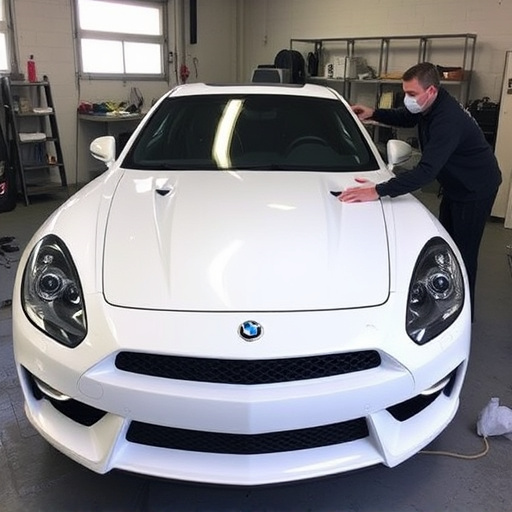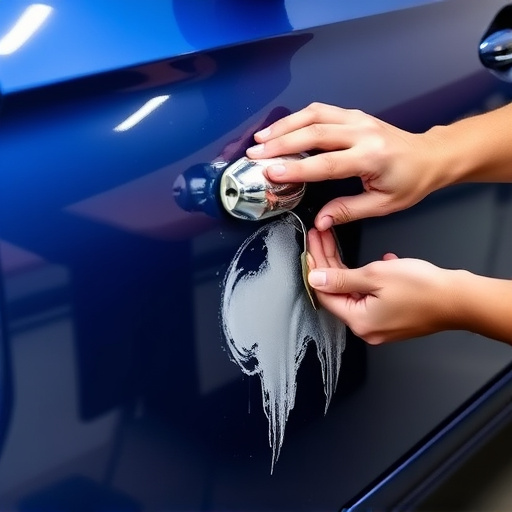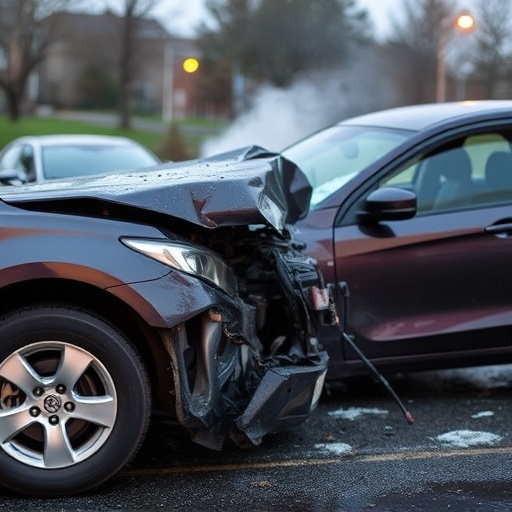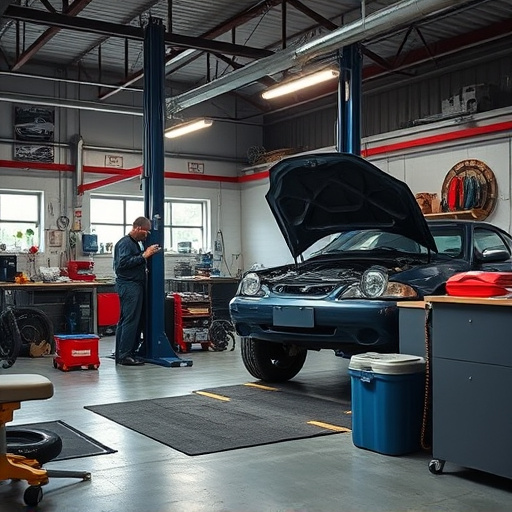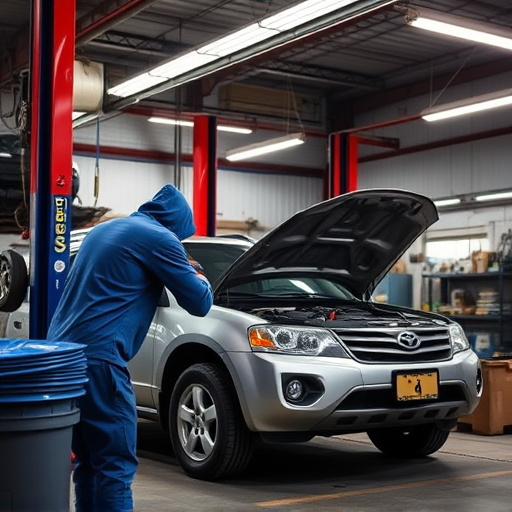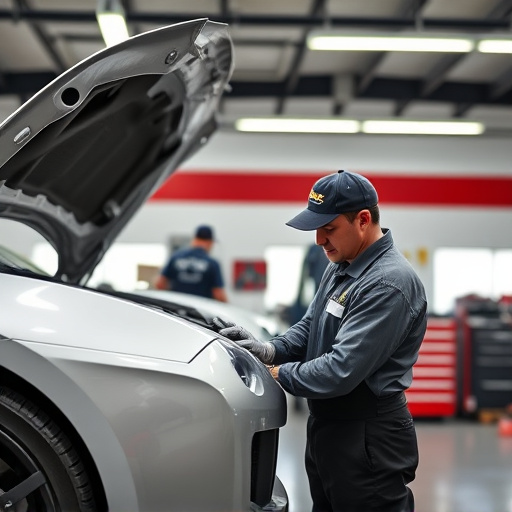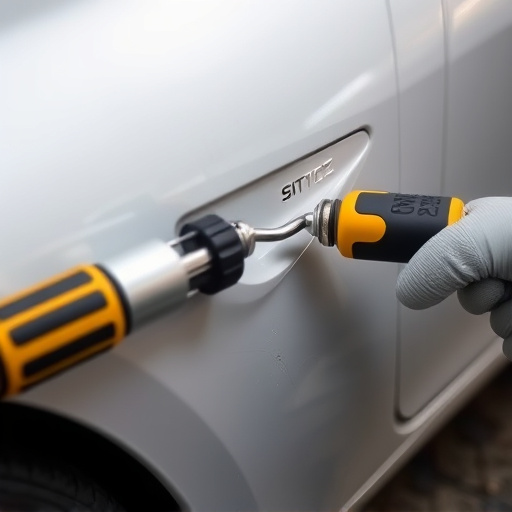Tesla's Safety Cell restoration involves a meticulous process after impact, combining advanced diagnostics, specialized repairs, and strict quality standards to ensure structural integrity and maintain superior safety ratings for passengers, offering owners peace of mind on the road.
Tesla vehicles are renowned for their innovative safety features, with the Safety Cell being a crucial component. This article delves into the intricate process of restoring a Tesla’s Safety Cell after heavy object penetration. We’ll explore the unique structure of this advanced system, analyze the impact of such incidents, and uncover the techniques used to reconnect and reinforce its integrity. By understanding these steps, you’ll gain valuable insights into the art of Tesla safety cell restoration.
- Understanding Tesla's Safety Cell Structure
- Penetration Impact: A Comprehensive Assessment
- Restoring Integrity: Techniques and Considerations
Understanding Tesla's Safety Cell Structure
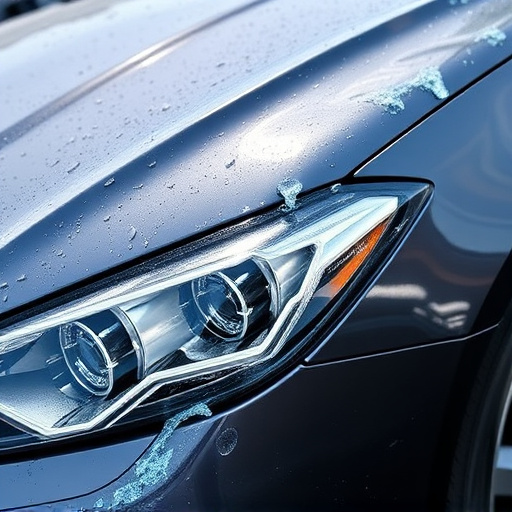
Tesla’s Safety Cell, a revolutionary design feature in their vehicles, is a complex network of high-strength steel and advanced materials engineered to protect passengers during accidents. This innovative structure, often referred to as a crumple zone, absorbs and distributes the force of impact, providing crucial time for the vehicle’s safety systems to activate. When a heavy object penetrates the exterior, understanding the Safety Cell’s architecture is key to successful restoration.
The process of Tesla safety cell restoration involves meticulous attention to detail and specialized techniques. After a collision, body shop services may include replacing damaged panels, realigning the frame, and reinforcing structural components within the Safety Cell. The goal is not just to fix the vehicle’s exterior but also to ensure its core protective systems remain intact and operational. This meticulous approach guarantees that the restored Tesla maintains its superior safety ratings and provides passengers with the same level of protection as the original vehicle.
Penetration Impact: A Comprehensive Assessment
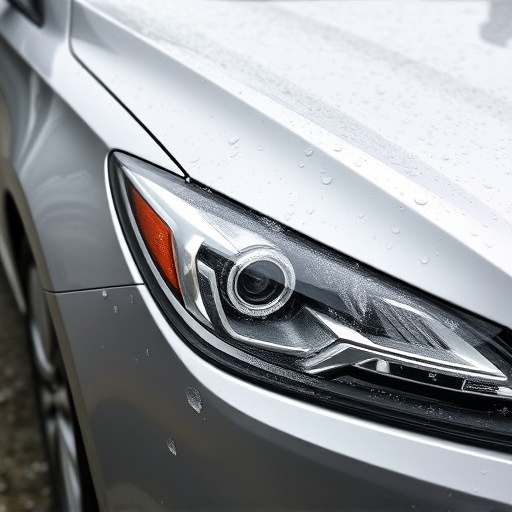
When a heavy object penetrates a Tesla vehicle, it can cause significant damage to the safety cell, which is crucial for passenger protection. A comprehensive assessment involves meticulously examining the impact site and adjacent components. Skilled technicians use advanced tools to measure deformation, detect cracks, and assess structural integrity. This meticulous process ensures that every element of the safety cell is restored to its optimal condition, enhancing the vehicle’s overall safety performance.
The assessment goes beyond visible damage, delving into detailed scans and simulations to predict potential weakness or stress points. By integrating modern diagnostic technologies with hands-on expertise in car paint services and collision damage repair, restorers can accurately gauge the extent of the impact. This holistic approach guarantees that any restored Tesla not only looks like new but also functions as effectively as a classic car restoration, providing owners with unwavering peace of mind on the road.
Restoring Integrity: Techniques and Considerations
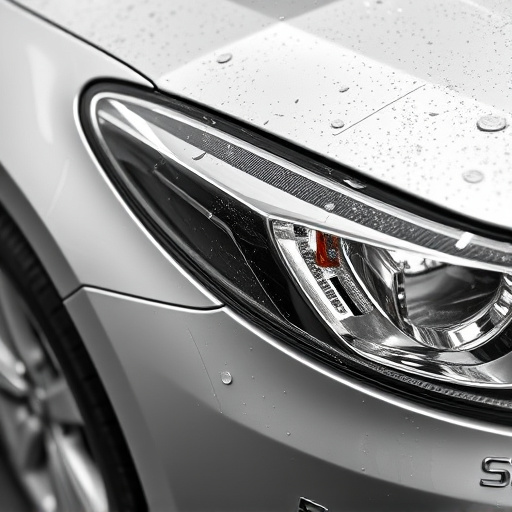
Restoring a Tesla’s safety cell after heavy object penetration requires meticulous techniques and considerations to ensure structural integrity. The first step involves careful inspection to identify any compromised areas, utilizing advanced diagnostic tools to pinpoint weak spots. This is crucial as even minor defects can compromise the vehicle’s overall safety.
The restoration process often entails precise cutting and removal of damaged components to create a clean canvas for reconstruction. Auto body repairs are then performed with utmost precision, using specialized equipment and materials that match the original specifications. Scratch repair techniques play a significant role in achieving a seamless finish, ensuring the safety cell regains its structural and aesthetic integrity. Car repair services should adhere to strict quality standards, as any subpar work could lead to future safety hazards.
Tesla’s innovative Safety Cell structure, designed to protect occupants in the event of a collision, undergoes meticulous restoration processes after heavy object penetration. By understanding the unique architecture and employing specialized techniques, professionals can effectively revert damage, ensuring the Safety Cell maintains its critical integrity for optimal passenger safety. Tesla safety cell restoration is a precise science that leverages advanced engineering knowledge and cutting-edge technology to safeguard lives on the road.

